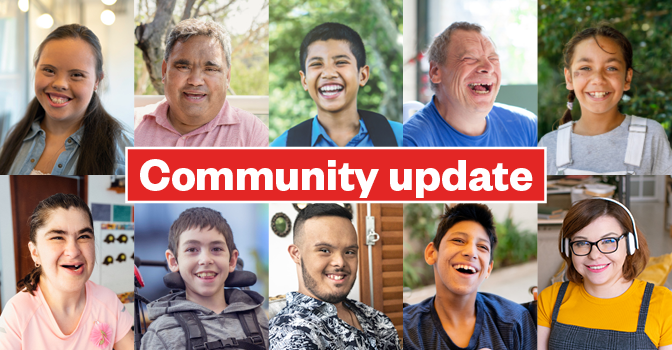More than 530,000 people are now receiving NDIS funding, an increase of 15% in the number of active participants in a year.
And plan management is the most popular way for people to manage their NDIS Plans. The number of people choosing to use a plan manager like Leap in! has increased from 40% to 56% in the last two years.
Along with details about who the NDIS is helping, the latest NDIS Quarterly Report contains useful information about what the NDIS is focusing on and details about new pricing arrangements.
Quarterly report highlights in numbers.
Of new people who joined the NDIS from April to June 2022:
- 44% (8,419) were children. There are now 82,863 participants aged under 7.
- 9.1% (1,762) identified as Aboriginal and/or Torres Strait Islander people.
- 9.3% (1,792) identified themselves as being from a Culturally and Linguistically Diverse community.
- There were 68,036 new participants
- The average payment per participant increased by $900
- The total amount paid in plan budgets was just over $36 million.
New pricing arrangements.
We’ve covered off some of these changes in our previous story Changes to the NDIS and how they affect you but the report highlights the following recent changes:
- High intensity supports are now in line with NDIS Commission definitions with a single price limit varying by time of day and day of week
- Providers of Core supports to participants in remote and very remote areas are now subject to the same pricing arrangements for provider travel as providers of Capacity Building supports
- Two areas have been reclassified as remote in an extension of the isolated town’s policy: Geraldton (WA) and its surrounds, and Cardwell (QLD)
- Providers of Core and Capacity Building supports who travel to deliver can now claim for “return provider travel” when the provider is required to pay this to the worker
- The short notice cancellation period has been extended to seven days.
Unspent funds in current NDIS Plans were increased to account for these changes.
Work, community and social activities.
The NDIS reports that despite COVID-19, participation rates in community and social activities have increased, while the overall rate of participation in work is stable.
Both community and social participation increase once people have been in the scheme for two or more years.
The overall percentage of people in a paid job who have been with the NDIS for at least two years is relatively stable. However, this differs by age group, with an increase in employment for people aged 15-24 and decreases for all age groups over 35 years.
However the report says the “current low unemployment rate in Australia offers increased opportunities for employment of people with disability, including NDIS participants.”
The number of employment-related goals in plans increased from 35% to 37% from 2021-2022 after the NDIS began focusing more on setting employment-related goals during planning conversations and other strategies.
Key tasks the NDIS has focused on in this quarter.
- COVID-19 related supports including the vaccine rollout, distribution of rapid antigen tests (RATs) and removing barriers to vaccination
- Supporting participants affected by floods
- Co-designing improvements with participants, families and carers such as consulting about new home and living, and participant safety policies
- Implementing new legislation that came into effect on 1 July 2022 including updating terminology and introducing plan variations (see Changes to the NDIS and how they affect you)
- The annual price review resulted in price limits for supports delivered by disability support workers increasing by 9%
What’s next? Changes and improvements coming later in 2022.
- Clearer information on what reasonable and necessary means, with case studies and examples
- Better guidelines and procedures, with plain English descriptions and more examples
- An easier to use website and portal
- Clearer information on what support coordination services are funded and how they should be separate from other service providers
- Trialling new ways of organising services in remote and very remote areas
- Simpler payment processes
- Individualised Living Options will be encouraged as an alternative to traditional group homes
- Improved support for independent decision making
- Where possible, a household will have the same NDIS contact.
Areas where the NDIS thinks improvement is needed.
The report indicates there are several areas where the NDIS says there is more to do, including:
- Improving employment opportunities
- Fraud and compliance
- Assisting participants to leave hospital when they are ready to be discharged
- Reducing the number of open Administrative Appeals Tribunal cases.
Ready to try plan management?
Join 56% of NDIS participants who benefit from using plan management to manage their NDIS budgets.
Become a Member of Leap in! plan management and get:
- Monthly detailed Budget Health Checks
- Advice from an experienced team, many with lived experience
- Smart connections to providers near you
- Full access to our award-winning app
- Prompt payment of invoices.
Get in touch with the Leap in! Crew. Call 1300 05 78 78, email crew@leapin.com.au or chat with us online.
All information sourced from NDIS Quarterly Report to Disability Ministers, 30 June 2022, released 1 August 2022 © National Disability Insurance Scheme Launch Transition Agency
Further reading
Changes to the NDIS and how they affect you.
Latest updates to NDIS Pricing Arrangements and Price Limits.

